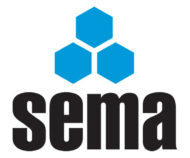The first question this month asks about Vertical Beam Spacing and our second asks about Locking Pins.
 Vertical Beam Spacing
Vertical Beam Spacing
Q. We use the Dexion Speedlock racking system rated at 2700kg per beam, and I have a question about the vertical beam spacing. If the first beam has been installed at the regulation distance from the floor, what is the maximum distance permitted between the first and second beam, second and third beam, and is this dependent on the weight of the pallets? Any information would be of great help.
A. The capacity of a racking system is dependent on a number of items such as the type of upright, the type of beam and beam end connector, the number of bays, the number of beam levels, the beam spacing etc. etc.
Racks are designed to suit particular client requirements so there is no such thing as a “regulation distance to the floor” only the height to first beam for which the rack was originally designed. Similarly, whilst there will be a practical limit to the maximum distance between beams it is possible to have quite large beam spacing provided that the rack has been designed appropriately.
The height from first beam to second beam and second beam to third beam, is usually less critical than the height to first beam as the load in the upright/frame is less. So, with beams at an equal spacing from ground to first beam and first to second beam etc., it is generally acceptable if the design has been checked from ground floor to first beam only.
If the beam spacing above the first beam level is greater than the height from ground to first beam then the design should be checked at each level to determine whether this is acceptable or not.
If there is a splice, with a thinner upright section above the splice, then the design needs to be checked to determine whether the thinner upright section above the splice is acceptable.
It is important that someone with the appropriate expertise, such as a Distributor, Manufacturer or an Independent Consultant, provides the load information which should then be shown on a load notice attached to the racking.
Should you use only rack specific pins?
Q. Inspectors often seem to suggest that racking pins should be specific to the racking and if the racking is dislodged the racking will then fold into itself.
I was always of the opinion that the racking pins / bolts were there to help stop racking shelves from jumping out of their uprights if they happened to be dislodged by a lift truck whilst loading stock onto the racking. They would have no bearing on how the racking collapsed in the event of an impact.
I would be grateful if you could enlighten me on this as I can’t find anything on the type of racking pin required in any of the SEMA guidance.
A. You are correct in stating that the purpose of the beam safety locks are to help reduce the possibility of the beams being dislodged by mechanical handling equipment. The SEMA Code states a minimum uplift force for which the beam safety locks is designed. The manufacturer designs the safety lock and the connection, including failure modes, to suit the specific requirements of the racking product.
Each manufacturer understands how their beam end connector and safety lock interacts with their uprights and how the connection behaves in certain circumstances.
There will be times when a non-standard lock may be required or allowed to be used, for example, on certain rack configurations with only 1, 2 or 3 bays or dynamic storage systems. However, this decision should be based on the specific requirements of the product and / or the project and should be specified by the manufacturer or supplier.
SEMA Rack Safety Awareness Inspection Courses
SEMA runs a one-day safety course on Rack Safety Awareness and Inspection. These courses are aimed at end users, giving an in-depth look at the need for inspections, how to conduct an assessment and what actions to take when this is completed. These courses are held at the SEMA headquarters in Burntwood, Staffordshire, but arrangements can be made to hold them at the delegates’ premises.
SEMA Approved Rack Inspectors Qualification
This qualification is aimed at professionals who conduct rack surveys as an integral and significant part of their duties. It involves delegates in undertaking an in-depth SEMA Course, together with an examination and practical assessment. CPD will be an important part of the qualification, demonstrating to end users that SEMA Approved Inspectors maintain a high professional standard.
SEMA Publications
SEMA has 26 publications in stock – Codes of Practice, ‘Guides’ and European documents – all of which are available to purchase online. For further information on these documents contact SEMA.
SEMA




Comments are closed.